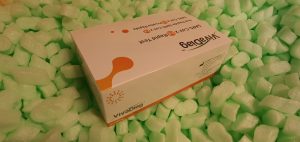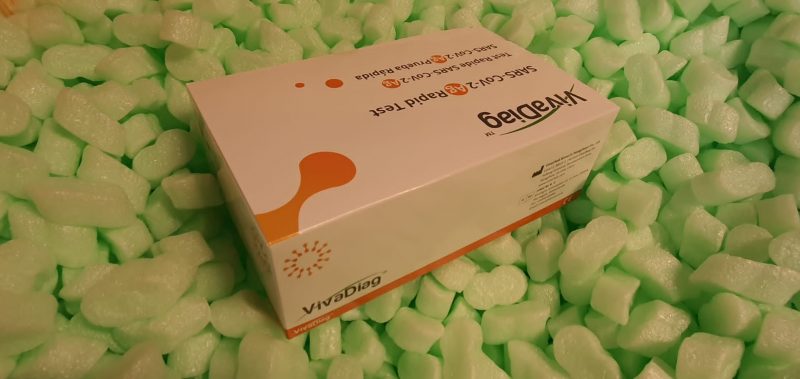As a novel found regulated cell dying sample, ferroptosis has been related to the improvement of Parkinson’s illness (PD) and has attracted widespread consideration. Nevertheless, the relationship between ferroptosis and PD pathogenesis continues to be unclear. This research goals to research the impact of iron overload on dopaminergic (DA) neurons and its correlation with ferroptosis.
Here we use nerve development issue (NGF) induced PC12 cells that are derived from pheochromocytoma of the rat adrenal to ascertain a classical PD in vitro mannequin. We discovered considerably decreased cell viability in NGF-PC12 cell below ammonium ferric citrate (FAC) administration. Moreover, extreme intracellular iron ions induced the improve of (reactive oxygen species) ROS launch in addition to the lower of mitochondrial membrane potential in PC12-NGF cells. In addition, we additionally discovered that overloaded iron can activate cell apoptosis and ferroptosis pathways, which led to cell dying.
Furthermore, MPP-induced PD cells have been characterised by mitochondrial shrinkage, decreased expression of glutathione peroxidase 4 (Gpx4) and ferritin heavy chain (FTH1), and elevated divalent steel transporter (DMT1) and transferrin receptor 1 (TfR1) expression degree. In distinction, Lip-1 and DFO elevated the expression degree of GPX4 and FTH1 in comparison with MPP-induced PD cell. In conclusion, we indicated that overloaded intracellular iron contributes to neurons dying by way of apoptosis and ferroptosis pathways, whereas DFO, an iron chelator, can inhibit ferroptosis in order to guard the neurons in vitro.
berrant synaptic plasticity is hypothesised to underpin persistent ache. Yet, synaptic plasticity regulated by homeostatic mechanisms have obtained restricted consideration in ache. We investigated homeostatic plasticity in the human main motor cortex (M1) of 21 wholesome people in response to experimentally induced muscle ache for a number of days. Experimental ache was induced by injecting nerve development issue into the muscle stomach of the proper extensor carpi radialis brevis muscle.
Pain and incapacity have been monitored till day 21. Homeostatic plasticity was induced on day 0, 2, 4, 6, and 14 in the left M1 utilizing anodal transcranial direct stimulation (tDCS) utilized for 7 and 5 min, separated by a 3-min relaxation interval. Motor-evoked potentials (MEP) to transcranial magnetic stimulation assessed the homeostatic response.
Reduced graphene oxide-coated electrospun fibre: impact of orientation, protection and electrical stimulation on Schwann cells habits
Electrical indicators are current in the extracellular areas between neural cells. To mimic the electrophysiological surroundings for peripheral nerve regeneration, this research was meant to research how conductive graphene-based fibrous scaffolds with aligned topography regulate Schwann cell habits in vitro by way of electrical stimulation (ES).
To this finish, randomly- and uniaxially-aligned polycaprolactone fibrous scaffolds have been fabricated by electrospinning, adopted by coating with diminished graphene oxide (rGO) by way of vacuum filteration. SEM revealed that rGO was efficiently coated on the fibers with out altering their alignment, and likewise led to an enchancment in mechanical properties and hydrophilicity. The electrical conductivity of the rGO-coated fibrous scaffold was as much as 0.105 S m-1.
When Schwann cells have been seeded on the scaffolds and stimulated by 10 mV in vitro, it was discovered that both the alignment of the fibers or ES led to a better degree of proliferation and nerve development issue (NGF) expression of Schwann cells. Further, ES at the aligned fibrous topography enhanced the expression of NGF, the proliferation of Schwann cells, and enhanced the cell migration charge by greater than 60% in comparison with both ES or the oriented fibers alone. The software of exogenous electrical cues mediated by templated biomaterials gives profound insights for nerve regeneration.

Serine Proteases and Chemokines in Neurotrauma; New Targets for Immune Modulating Therapeutics in Spinal Cord Injury
Progressive neurological harm after mind or spinal twine trauma causes loss of motor perform and therapy may be very restricted. Clotting and hemorrhage happen early after spinal twine (SCI) and traumatic mind harm (TBI), inducing aggressive immune cell activation and progressive neuronal harm. Thrombotic and thrombolytic proteases have direct results on neurons and glia, each therapeutic and likewise damaging, bidirectional immune cell interactions.
Serine proteases in the thrombolytic cascade, tissue- and urokinase-type plasminogen activators (tPA and uPA), in addition to the clotting issue thrombin have diversified results, growing neuron and glial cell development and migration (tPA), or conversely inflicting apoptosis (thrombin) and activating inflammatory cell responses. tPA and uPA activate plasmin and matrix metalloproteinases (MMPs) that break down connective tissue permitting immune cell invasion, selling neurite outdevelopment.
Serine proteases additionally activate chemokines. Chemokines are small proteins that direct immune cell invasion, but in addition mediate neuron and glial cell communication. We are investigating a brand new class of therapeutics, virus-derived immune modulators; One that targets coagulation pathway serine proteases and a second that inhibits chemokines. We have demonstrated that native infusion of these biologics after SCI reduces irritation offering early improved motor perform.
[Linking template=”default” type=”products” search=”Guinea pig Beta-nerve growth factor ELISA Kit” header=”2″ limit=”130″ start=”2″ showCatalogNumber=”true” showSize=”true” showSupplier=”true” showPrice=”true” showDescription=”true” showAdditionalInformation=”true” showImage=”true” showSchemaMarkup=”true” imageWidth=”” imageHeight=””]
Serp-1 is a Myxomavirus-derived serine protease inhibitor, a serpin, that inhibits each thrombotic and thrombolytic proteases. M-T7 is a virus-derived chemokine modulator. Here we evaluation the roles of thrombotic and thrombolytic serine proteases and chemoattractant proteins, chemokines, as potential therapeutic targets for SCI. We focus on virus-derived immune modulators as remedies to scale back progressive irritation and ongoing nerve harm after SCI.
